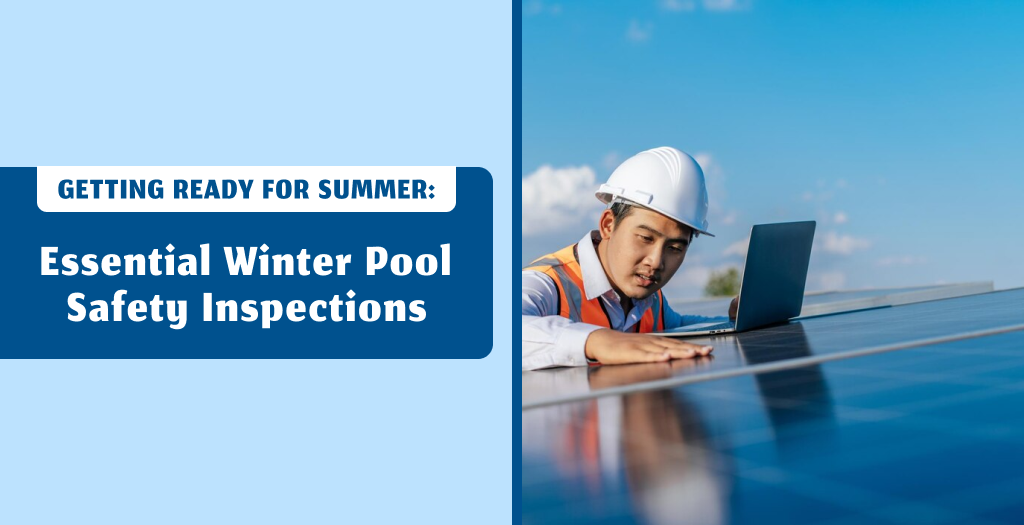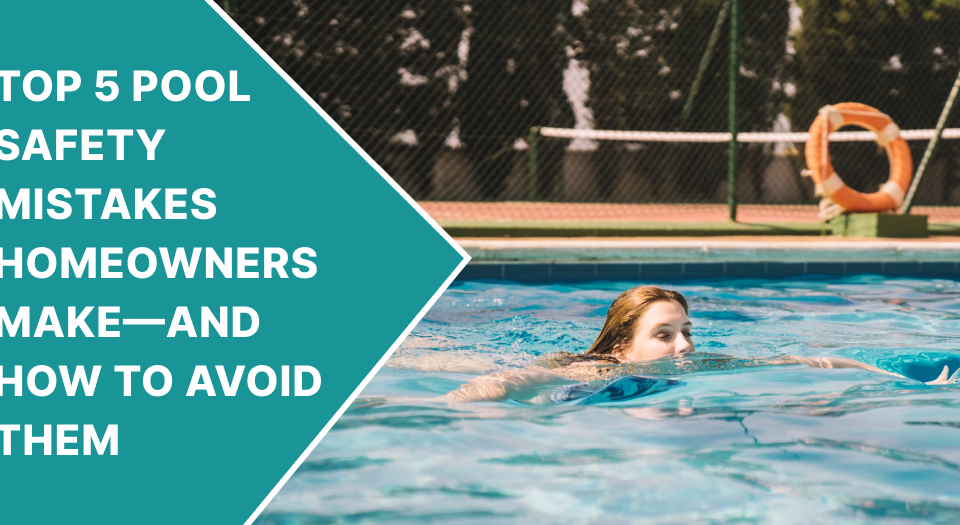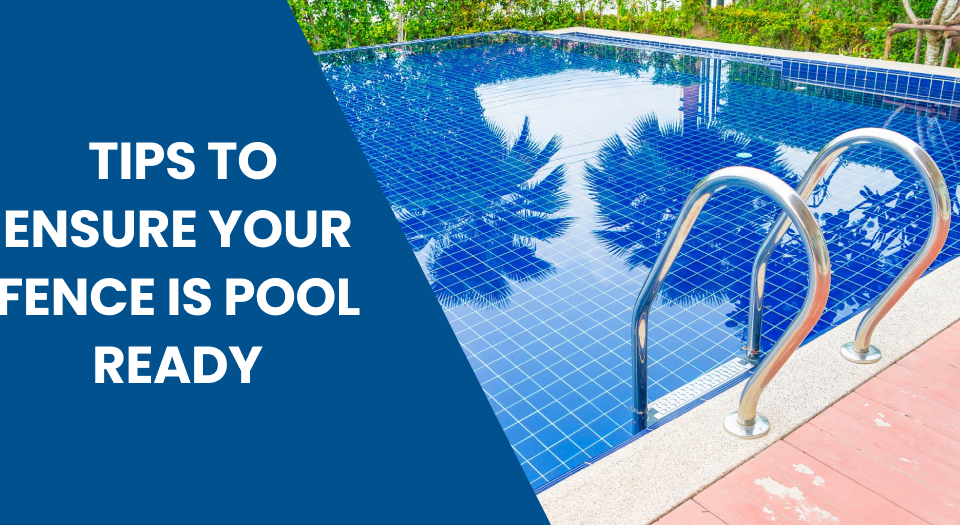
Pool Safety Barriers for Residential Pools
March 14, 2025
Tips to Childproof Your Swimming Pool Today
April 15, 2025As winter settles in and temperatures drop, many pool owners forget about their backyard oasis until the first warm days of spring arrive. However, winter is the perfect time to conduct essential pool safety inspections and ensure that everything is in optimal condition for summer. A proactive approach saves time and money on unexpected repairs and ensures a safe and enjoyable swimming experience when the hot months roll around.
This guide will walk you through the key areas to inspect during winter to keep your pool safe, functional, and ready for summer fun.
Why Conduct Pool Safety Inspections in Winter?
It might seem counterintuitive to inspect your pool when it’s not in use, but winter inspections offer several advantages:
- Early Problem Detection: Identifying and addressing minor issues now can prevent costly repairs in the peak season.
- Avoiding Last-Minute Rush: Many pool service companies get booked quickly in the spring. Winter inspections give you a head start.
- Ensuring Safety: A neglected pool can develop safety hazards, such as broken fencing or slippery surfaces over time.
- Preserving Equipment: Winter conditions can cause wear and tear on pool structures and equipment, which should be checked regularly.
Now that we understand why winter inspections are crucial let’s dive into the essential steps to take.
1. Inspect the Pool Cover
If you have a pool cover in place for the winter, it’s your first line of defense against debris, harsh weather, and accidents. However, covers can deteriorate over time, leading to safety risks.
- Check for Tears and Damage: Inspect the cover for rips, holes, or sagging areas where water or debris can accumulate.
- Ensure Proper Fit: A loose cover can allow animals, children, or debris to fall in.
- Remove Excess Water and Debris: Pool covers can become weighed down by rain, snow, and leaves, which can cause sagging or even collapse.
- Inspect Anchors and Fasteners: If you use a safety cover, ensure all anchors and fasteners are secure to prevent accidental openings.
If your pool cover shows significant wear, consider replacing it before spring.
2. Check Pool Fencing and Barriers
Pool fences and safety barriers prevent accidents, particularly for households with children and pets. Winter is an ideal time to assess their integrity.
- Look for Gaps or Loose Sections: Ensure no spaces are large enough for small children or animals to squeeze through.
- Test Gates and Locks: Pool gates should be self-closing and self-latching. The latch mechanism should be repaired or replaced if it is loose or rusted.
- Inspect the Material: Wood fences can rot, metal fences can rust, and mesh fences can sag. Address any material-specific issues before they become safety hazards.
- Ensure Compliance: Check your local pool safety regulations to ensure your fence meets the required standards.
3. Examine Pool Decking and Surrounding Areas
Over time, pool decks can become a slip-and-fall hazard due to cracks, algae growth, or loose tiles. Winter is a great time to inspect the area and schedule necessary repairs.
- Look for Cracks or Uneven Surfaces: These can be tripping hazards and should be fixed before the summer season.
- Check for Slippery Areas: Accumulated moisture and algae can make surfaces dangerously slick. Consider pressure washing or applying a non-slip coating.
- Inspect Drainage Systems: Ensure drainage systems are clear and functioning properly to prevent water pooling in unsafe areas.
- Check Pool Ladders and Handrails: These should be sturdy and rust-free to provide safe entry and exit points.
4. Evaluate Pool Equipment and Systems
Even though your pool isn’t in use, equipment such as pumps, filters, and heaters can still experience wear and tear. Regular maintenance can extend the life of your pool equipment.
- Inspect the Pool Pump and Filter: Look for leaks, unusual noises, or signs of wear.
- Check the Pool Heater: If you have a heater, test it to ensure it’s functioning properly before you need it.
- Examine Pool Lights: Ensure all underwater and surrounding lights are working correctly and replace burnt-out bulbs.
- Look for Leaks: Inspect pipes, valves, and fittings for any signs of leaks, which can become significant problems if left unattended.
5. Test Water Chemistry (Even in Winter!)
Even if your pool is covered and unused, maintaining proper water chemistry during winter can prevent algae growth, scaling, and staining.
- Check pH and Alkalinity: Keeping water balanced can prevent corrosion and scale buildup.
- Monitor Chlorine Levels: A small amount of sanitizer helps prevent bacteria and algae growth.
- Add an Algaecide if Necessary: If your area experiences mild winters, algae can still develop under a pool cover.
- Inspect for Staining or Discoloration: Catching and treating stains early can make cleaning easier when reopening the pool.
6. Assess Pool Safety Accessories
Beyond structural and equipment inspections, don’t forget about additional safety features that can help prevent accidents.
- Test Pool Alarms: If you have a pool alarm, ensure it’s still functioning correctly.
- Check Rescue Equipment: Items like life rings, reaching poles, and first aid kits should be in good condition and easily accessible.
- Review Pool Safety Rules: If you have a posted set of pool rules, make sure they are still visible and legible.
7. Plan for Necessary Repairs and Upgrades
If you notice any issues during your winter inspection, schedule repairs immediately. Waiting until spring can lead to higher costs, longer wait times and unnecessary stress.
- Get Professional Help if Needed: Professionals best handle some repairs, such as pool resurfacing or major equipment replacements.
- Consider Energy-Efficient Upgrades: Winter is a great time to research and install energy-efficient pumps, heaters, and lighting to reduce summer operating costs.
- Look Into Pool Enhancements: If you’ve considered adding new features like automation systems, LED lighting, or safety covers, winter is the perfect time to start planning.
Conclusion
Winter may not seem like the obvious time to think about pool maintenance, but conducting a thorough safety inspection during the off-season ensures your pool is ready for summer without surprises. By taking a proactive approach, you can prevent costly repairs, enhance safety, and ensure that when the warm weather arrives, all you have to do is jump in and enjoy.
Whether you’re a seasoned pool owner or new to maintaining a backyard pool, regular inspections are the key to a safe and hassle-free swimming season. So, take the time this winter to give your pool the attention it deserves—you’ll thank yourself when summer rolls around!




